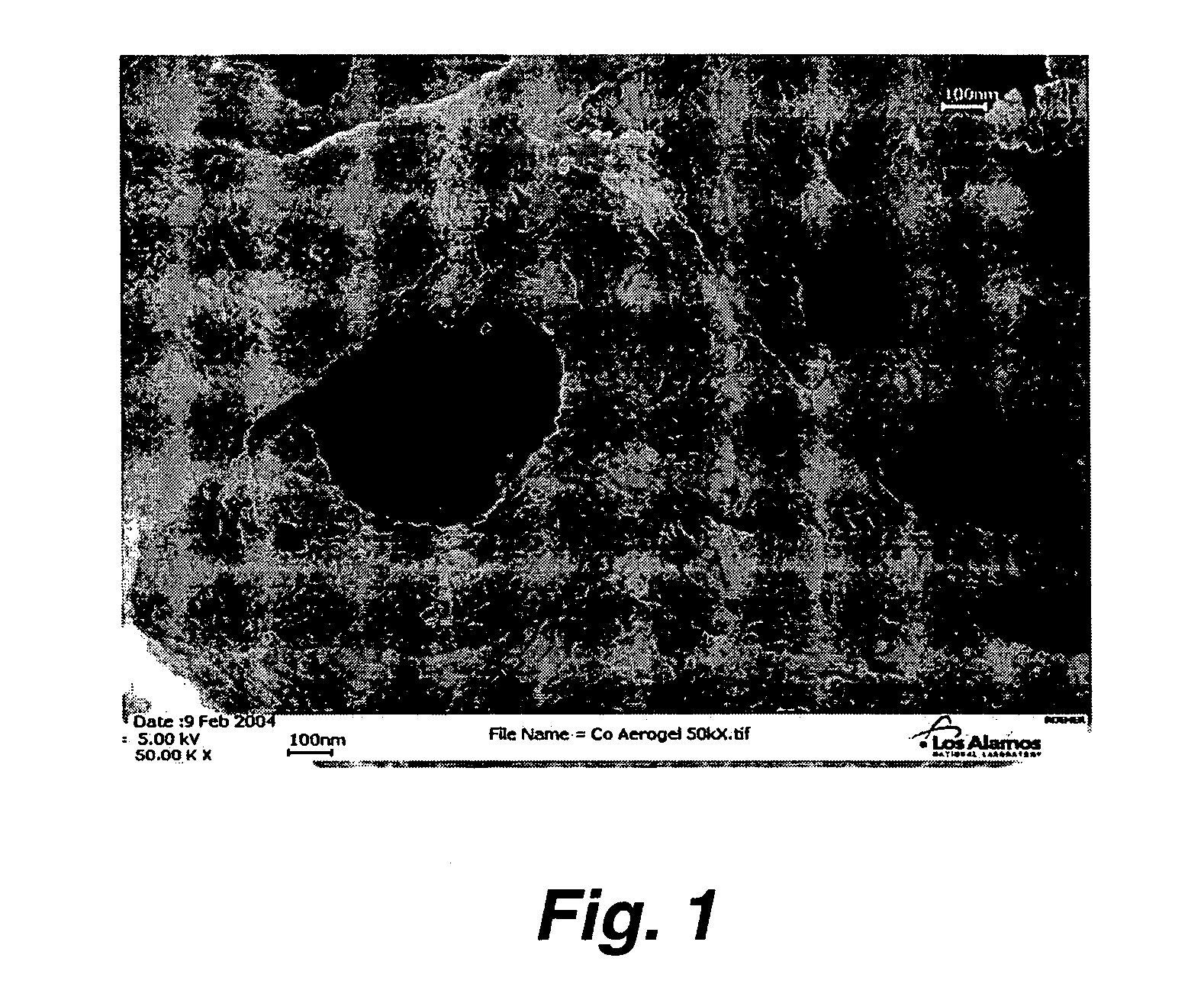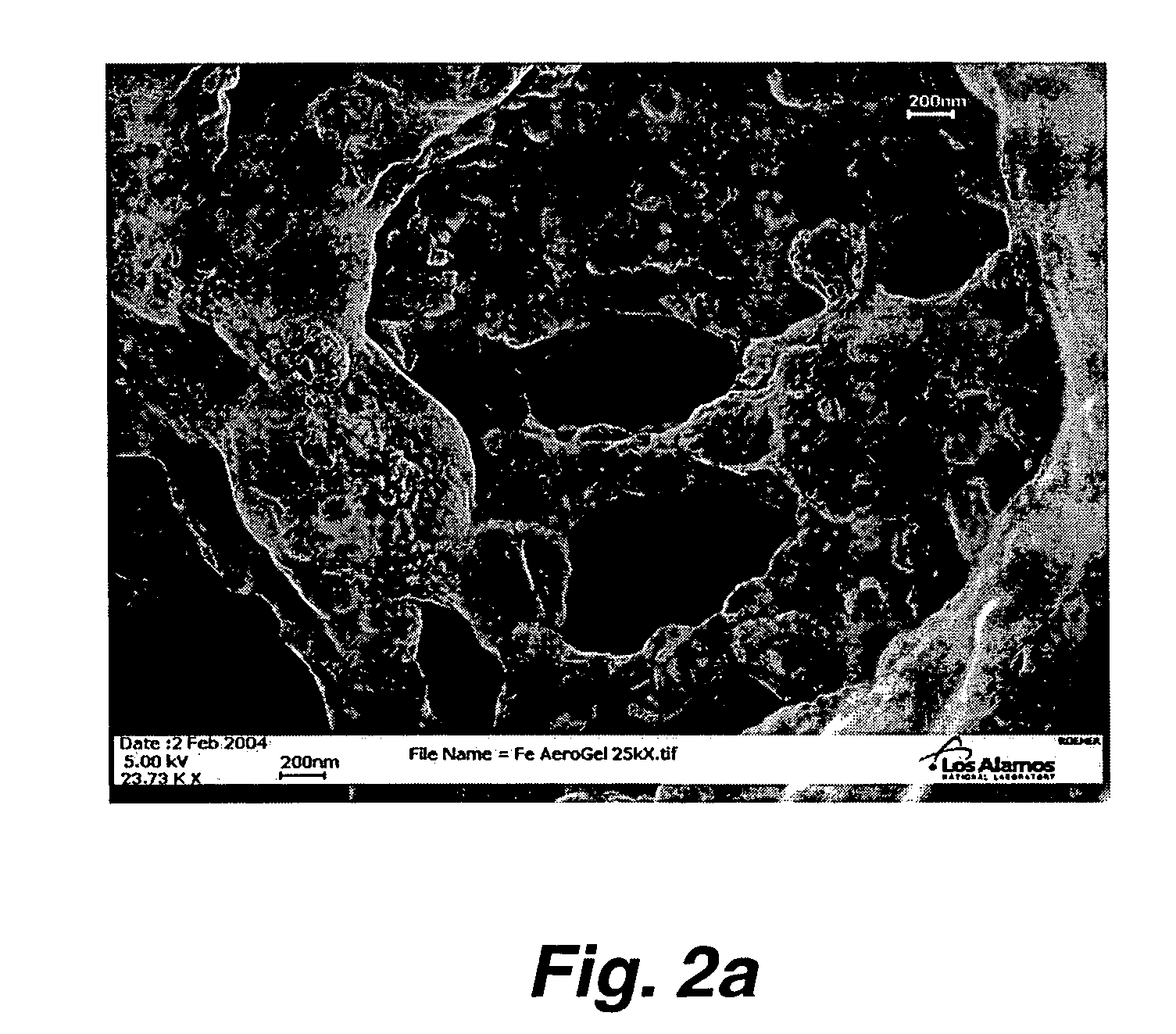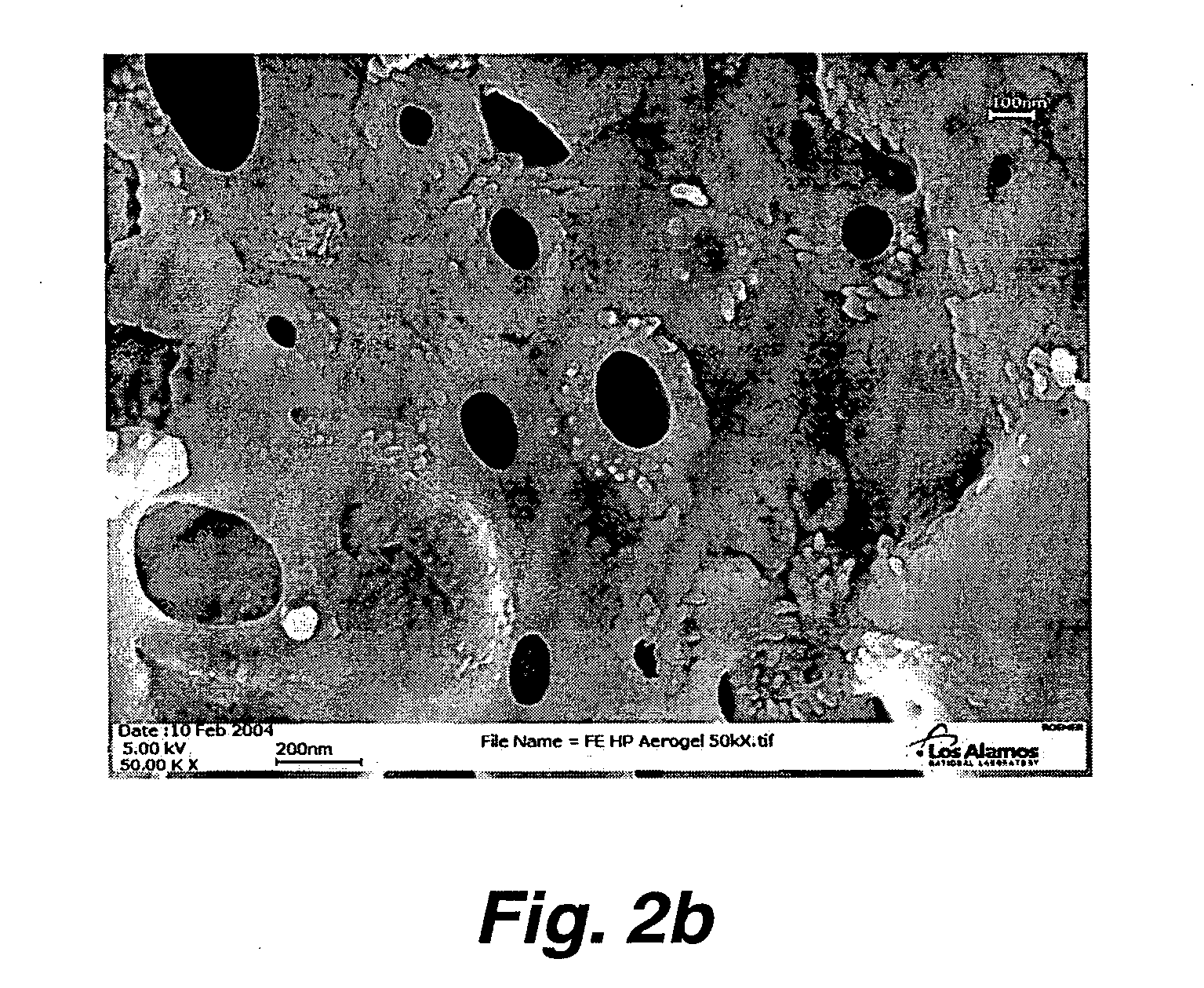Preparation of nanoporous metal foam from high nitrogen transition metal complexes
a transition metal complex and nanoporous metal technology, applied in the field of high-nitrogen transition metal complex preparation, can solve the problems of limiting the use of porous monolithic structures to structural applications, unable to use a template, and lack of generality and flexibility of the current methods in the preparation of nanoporous materials with a variety of different metals, etc., to achieve high temperature, low density, and good stability
- Summary
- Abstract
- Description
- Claims
- Application Information
AI Technical Summary
Benefits of technology
Problems solved by technology
Method used
Image
Examples
example 1
[0044]Preparation of ammonium tris(bi(tetrazolato)amine)ferrate(III) (1). Iron (III) perchlorate hexahydrate [FeIII(H2O)6](ClO4)3 (5.2 grams, 10.8 millimoles) and ammonium bi(tetrazolato)amine (6.07 g, 32.4 mmol) were added to about 50 ml of de-ionized water. The mixture was refluxed with stirring for about 5 hrs to yield a homogeneous blue solution. The volume of the solution was reduced to dryness. The solid product was extracted in a sohlet extractor using methanol as the solvent. A dark blue solid was recovered by filtration. The solid was washed with fresh methanol and dried in the air. Yield of ammonium tris(bi(tetrazolato)amine)ferrate(III) 1: 5.4 g (89%). An equation that summarizes the preparation is shown below.
[0045]
[0046]Compound 1 was subjected Differential Scanning Calorimetry (DSC); the observed decomposition temperature of compound 1 was 213 degrees Celsius. An infrared spectrum of a Nujol mull of compound 1 included the following peaks: 3557, 3239, 3139, 1610, 1541,...
example 2
[0047]Preparation of nanoporous iron foam from compound 1. A pellet (6.3 mm in diameter by 6.4 mm in length and 0.32 g) of compound 1 synthesized according to EXAMPLE 1 was pressed to maximum density in a hydraulic press and stainless steel die. The pellets were scored to secure a thin ignition wire to the ignition area. Ignition of the pellets under an inert atmosphere (argon or nitrogen) using the heated wire resulted in the production of a foam monolith (0.056 g, 6.1–6.5 mm in diameter by 21 mm in length). FIG. 5 shows an image of a pellet of ammonium tris(bi(tetrazolato)amine)ferrate(III) next to a column of foam monolith produced from a pellet of that size under an argon pressure of about 1005 psig argon. The scale above the pellet shows a distance of 4 mm.
[0048]A wafer (0.32 g, 12.6 mm in diameter by 3 mm in width) of compound 1 was also prepared and transformed using a resistively heated ignition wire to a monolith of irregular dimension weighing 0.052 g (16.2% of the weight ...
example 3
[0050]Synthesis of ammonium tris(bi(tetrazolato)amine)cobaltate(III) (2).
[0051]Cobalt (II) perchlorate hexahydrate [CoII(H2O)6](ClO4)3 (5 grams, 17.2 mmol) and ammonium bi(tetrazolato)amine (9.65 g, 51.6 mmol) were added to about 70 mL of de-ionized water. The mixture was refluxed for 5 hours. About 10 ml of an aqueous 30 percent solution of hydrogen peroxide was added and the solution was stirred continuously for another 3 hours. The volume of the solution was reduced to dryness. The solid product was extracted in a sohlet extractor using methanol as the solvent. A solid was recovered by filtration, washed with fresh methanol, and dried in the air. Yield of 2: 8.1 g (84%). Fast decomposition from Differential Scanning Calorimetry (DSC) data: 251° C. IR (Nujol mull) 3517, 3230, 3157, 1611, 1553, 1491, 1322, 1261, 1165, 1135, 1113, 1097, 1018, 808, 742, and 471 cm−1.
[0052]
PUM
| Property | Measurement | Unit |
|---|---|---|
| temperature | aaaaa | aaaaa |
| pressure | aaaaa | aaaaa |
| distance | aaaaa | aaaaa |
Abstract
Description
Claims
Application Information
 Login to View More
Login to View More - R&D
- Intellectual Property
- Life Sciences
- Materials
- Tech Scout
- Unparalleled Data Quality
- Higher Quality Content
- 60% Fewer Hallucinations
Browse by: Latest US Patents, China's latest patents, Technical Efficacy Thesaurus, Application Domain, Technology Topic, Popular Technical Reports.
© 2025 PatSnap. All rights reserved.Legal|Privacy policy|Modern Slavery Act Transparency Statement|Sitemap|About US| Contact US: help@patsnap.com



